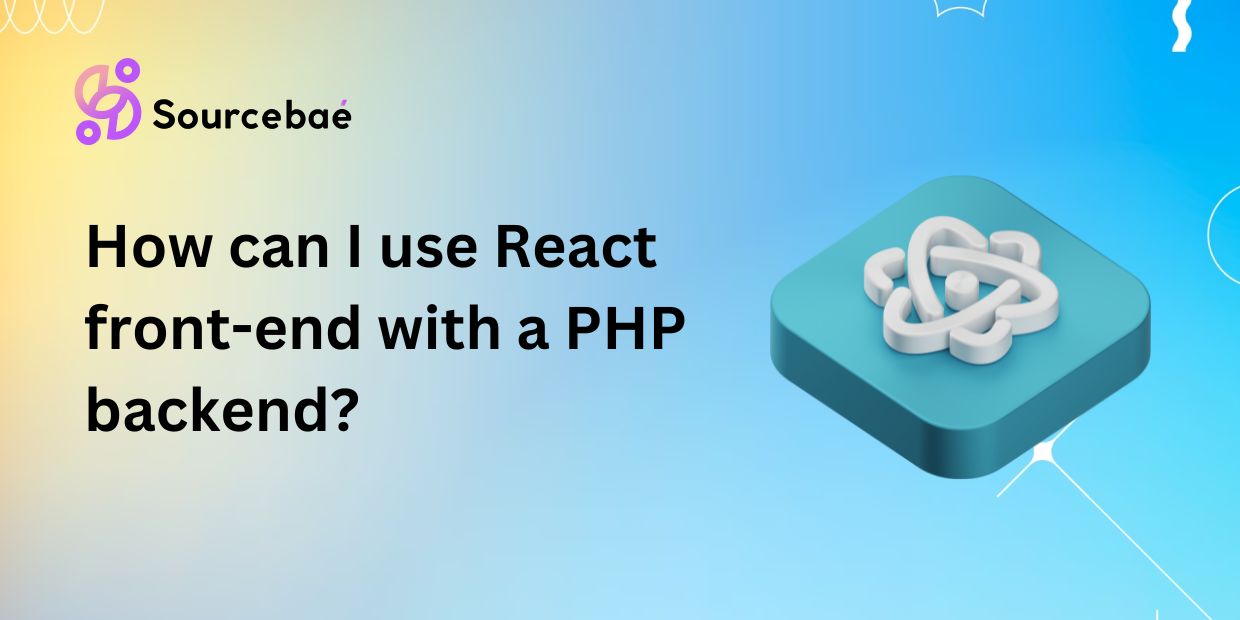Creating dynamic and interactive web applications is a top priority in today’s ever-evolving web development landscape. React, a JavaScript library for building user interfaces has gained immense popularity due to its efficiency and flexibility. On the other hand, PHP remains a robust choice for server-side scripting. In this guide, we will explore the seamless integration of the React front-end with a PHP backend, allowing you to harness the power of both technologies.
Getting Started with React and PHP
To embark on this journey of combining React and PHP, you need a basic understanding of both technologies. Here’s a brief overview:
React: A Quick Overview
React is a JavaScript library that simplifies the creation of user interfaces. Developed and maintained by Facebook, it allows developers to build reusable UI components.
PHP: A Brief Introduction
PHP is a server-side scripting language that excels in web development. It can handle databases, session management, and much more.
Why Choose React and PHP Together?
Combining React and PHP offers several advantages:
- Efficiency: React’s virtual DOM makes UI updates lightning-fast, while PHP handles server-side tasks efficiently.
- Scalability: Both technologies are highly scalable, enabling you to build applications that can grow with your needs.
- Community Support: React and PHP have robust communities with extensive documentation and resources.
Setting Up Your Development Environment
Before diving into coding, you’ll need to set up your development environment:
Prerequisites
- Node.js and npm are installed on your machine.
- A code editor like Visual Studio Code.
4. Creating a React App
Let’s start by creating a new React application:
1: Open your terminal and run the following command:
npx create-react-app my-react-app
2: Navigate to your project folder:
cd my-react-app
3: Start the development server:
npm start
Building the PHP Backend
Now that your React app is up and running, it’s time to build the PHP backend:
Step 1: Create a new folder for your PHP files within your React app directory.
mkdir php-backend
Step 2: Inside the php-backend folder,
create a file named api.php.
Step 3: In api.php, you can start defining your PHP API endpoints and business logic.
Establishing Communication
To make your React front-end and PHP backend communicate, you’ll need to set up API requests:
Step 1: In your React components, use libraries like axios or the built-in fetch API to send HTTP requests to your PHP backend.
Step 2: In your PHP code, handle these requests and return appropriate responses.
Securing Your Application
Security is paramount when integrating React and PHP. Implement proper authentication and authorization mechanisms to protect your application from potential threats.
Deployment
Once you’ve developed and thoroughly tested your React and PHP application, it’s time to deploy it to a web server. Popular hosting options include AWS, Heroku, and shared hosting providers.
How can I use React front-end with a PHP backend?
Now that you’ve learned the fundamentals of combining React and PHP, you might wonder how to apply this knowledge to your projects. Here are some practical steps to follow:
- Identify your project requirements and goals.
- Plan your application’s architecture, considering the separation of front-end and back-end responsibilities.
- Choose the appropriate state management solution for your React app, such as Redux or React Context API.
- Design your database schema and create the necessary tables for your PHP backend.
- Implement API routes in your PHP backend to handle CRUD operations.
- Develop React components that interact with your PHP API through HTTP requests.
- Test your application thoroughly to ensure it functions as expected.
- Optimize the performance of your application by employing best practices in React and PHP development.
FAQs
How can I deploy my React and PHP applications?
To deploy your application, you can choose a web hosting service that supports React and PHP, such as AWS, Heroku, or a shared hosting provider. Follow the hosting provider’s documentation to deploy your React front-end and PHP backend.
What are the common challenges when integrating React and PHP?
Some common challenges include CORS (Cross-Origin Resource Sharing) issues, authentication and authorization, data validation, and ensuring secure communication between the front-end and back-end.
Is it possible to use a different front-end framework with a PHP backend?
You can use various front-end frameworks like Angular, Vue.js, or even plain HTML/CSS with a PHP backend. The key is establishing a robust API that your chosen front-end technology can consume.
How can I optimize the performance of my React and PHP applications?
Performance optimization involves minimizing unnecessary API requests, optimizing database queries, using caching mechanisms, and employing code-splitting and lazy loading in your React application.
What are some security best practices for React and PHP integration?
To enhance security, implement proper input validation, sanitize user inputs, use HTTPS for secure communication, implement authentication and authorization mechanisms, and regularly update dependencies to patch security vulnerabilities.
Can I use React Native with a PHP backend for mobile app development?
You can use React Native, a mobile app development framework based on React, with a PHP backend to build cross-platform mobile applications. The principles of communication between the front-end and back-end remain similar.
Conclusion
Integrating the React front-end with a PHP backend opens a world of possibilities for creating powerful and dynamic web applications. By following the steps outlined in this guide and considering best practices, you can confidently embark on your journey to harness the combined power of these two technologies. Remember that continuous learning and exploration are vital to mastering the art of web development.
READ MORE: What is the Difference Between Edge Computing and AI?






